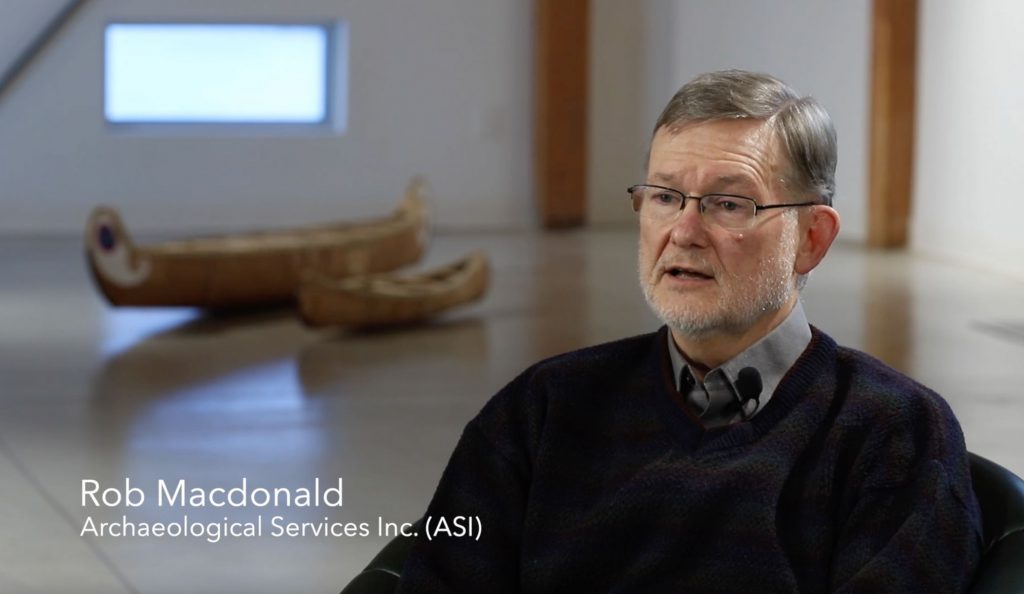Time Immemorial: A Misko-Aki Timeline
Indigenous peoples have lived in Misko-Aki since time immemorial. Oral histories such
as the Anishinaabek creation story describe how Indigenous peoples interacted with this landscape. The artefacts found in the area date human presence to over 13,000 years ago!
A pre-contact agreement called the Dish with One Spoon was established to end any conflict between nations. After contact and the establishment of the fur trade, the competition for resources disrupted the Dish agreement. The Anishinaabek continued to occupy the land; the Métis presence began after the War of 1812.
The Coldwater Experiment of 1830-1836 began to settle Anishinaabe people onto reserves. The Haudenosaunee Wahta Mohawks moved into the region in 1881. Today, Muskoka is home to a wide variety of people from the world over. Come along and enjoy the journey that is Misko-Aki

10,000 BCE
3,000 B.C.E. until recently
Use of the Mnjikaning Fish Weirs at the Narrows
Visit First Landing: Early People.
c. 900 C.E.
The Anishinaabek begin migrating to Misko-Aki from the east.
Visit Third Landing: Arrival of the Anishinaabek.
Early 1600s
Arrival of Europeans
c. 1650
Huron-Wendat are driven out of Misko-Aki by the Haudenosaunee, and resettle in what is now Quebec and the United States.
Visit Second Landing: Huron-Wendat
After 1812
Emergence of the Métis
Visit Fifth Landing: Métis Connections
1830–1836
The Coldwater Experiment settles Anishinaabe people in Misko-Aki onto reserves.
Visit Fourth Landing: Anishinaabek Communities
1867
Canadian Confederation
1880s
Muskoka starts to become a “cottage country” destination for white settlers.
1881
Mohawks, one of the Six Nations of the Haudenosaunee, return to Misko-Aki.
Visit Sixth Landing: Arrival of the Wahta Mohawks
1923–2018
The Williams Treaties of 1923 deprive the Anishinaabek of land and rights, a matter not formally acknowledged until 2018.
Visit Seventh Landing: Williams Treaties
2008–2015
Truth and Reconciliation Commission of Canada
The Upcoming Faces: The Seven Generations
In the Haudenosaunee tradition Tahatikonhsontóntie refers to the new faces coming along, meaning that the Earth holds the coming generations. Therefore, we always have to take into consideration how our decisions will impact the future.
An Indigenous philosophy of the Seven Generations is that what we do today will be felt by our relations in the future. As human beings, we have a responsibility to build healthy relationships with the land, animals, and other people so that our descendants may enjoy peace and good health.

LISTEN TO OUR STORIES
Rob Macdonald, Archaeologist, provides some perspective on the 13,000-year presence of Indigenous people in Misko-Aki. (Length: 1:00)